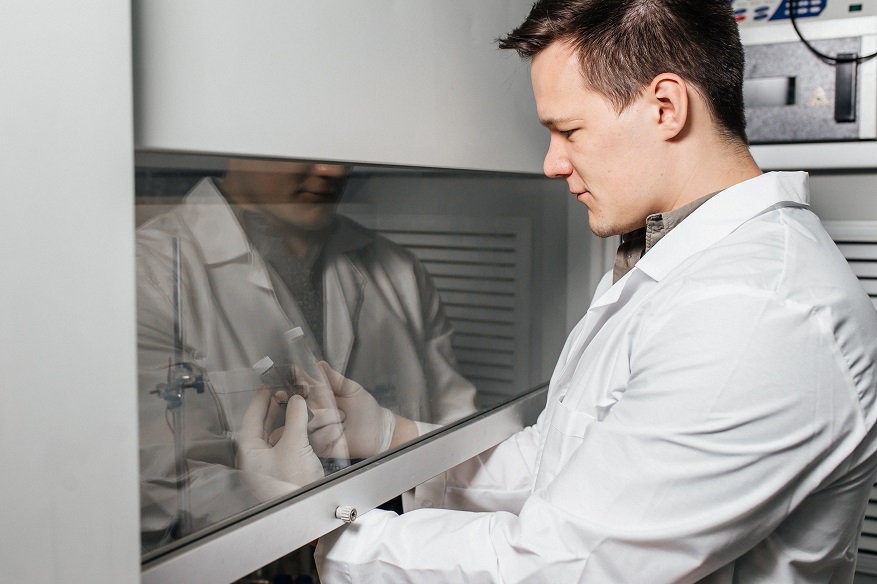The research findings are published in Nano-Micro Small (Q1; IF: 15,153).
The development of nanoscale structures is of great research interest to the global science. They can potentially be used as non-invasive surgical instruments. The nanostructures are driven by an external source, such as magnetic fields or ultrasound. More particularly, conventional magnetic nanoparticles are not suitable for controlled drug release.
Researchers from Tomsk Polytechnic University have synthesized novel nanoparticles with magnetoelectric properties for biomedical applications. Previously, such nanoscale structures with magnetoelectric properties were developed in Russia only for use in electronics. The project is led by Andrei Kholkin, Director at Piezo- and Magnetoelectric Materials Research & Development Center of the Research School of Chemistry and Applied Biomedical Sciences. The novel heterostructures have been synthesized via a hydrothermal method. They represent a core-shell type, which gives a material with magnetoelectric properties. For this purpose, the researchers combined two different materials in terms of crystalline structure and chemical composition.To create the shell, the researchers modified barium titanate by partially replacing barium ions with calcium ions and titanium ions with zirconium ions. This enhanced the piezo properties, which improves the efficiency of nanostructures manifold. While the replacement of cobalt ferrite, commonly used in such heterostructures, with manganese ferrite helped to eliminate toxic effects. In addition, manganese ferrite is an X-ray contrasting agent: it can be monitored by tomography to track its distribution and accumulation in the body. This determines high biocompatibility of the nanoscale structures. They can integrate into a patient's body and stimulate in vivo the cellular and tissue reactions required to achieve adequate therapeutic effects.The core is a magnetostrictive material, namely manganese ferrite, which can be stretched, compressed, and twisted under an external magnetic field. It is coated with a shell made of a piezo material, modified barium titanate. When we expose the core to mechanical stress, that is deform the material by a magnetic field, the deformation affects the piezo shell resulting in an electric potential. Under an external magnetic field we can redistribute this surface charge, in other words change the polarization. The magnetoelectric effect releases the drug from the nanostructure surface on demand under alternating magnetic field due to the change in polarization,
Bioelectric signals control many processes in the body, including cellular functions. When we create an electrical material capable of such control functions and stimulate the piezoelectric effect, we therefore trigger the required chemical and biochemical reactions. For example, we can stimulate the regeneration of bone and nerve tissues or exert a detrimental effect on cancer cells. We are currently studying if it is possible to create neurostimulators based on the nanostructures for the treatment of Parkinson's and Alzheimer's diseases. In addition, they can potentially be effective for purifying water reservoirs from organic pollutants. Charged material in water generates reactive oxygen intermediates that are toxic to organic matter such as bacteria, viruses, and dyes,
At this stage of the research, the scientists are testing the nanostructures in terms of biological models and cell lines, aiming to identify optimal operating parameters, such as magnetic force and exposure time, to enhance the positive effects of nanoparticles and minimize the negative ones.
